Arctic blast - NW Edition
artinnature
3 months ago
last modified: 3 months ago
Featured Answer
Sort by:Oldest
Comments (27)
gardengal48 (PNW Z8/9)
3 months agoRelated Discussions
Coldest air in many years on its way?
Comments (84)I grafted an unknown early peach that my neighbor has grown for 10 years or more ( It was there when he bought the house). It's very delicious but as soon as it got old enough to have good fruit, I only had 2 years of sweet peaches and the last 2 years when the tree flowered in Jan. not Feb. the weather has been too cool and overcast and the ripening peaches all taste terrible. The same for the neighbors tree that I made the graft from. I could just wait and see again what will happen. Still, it's a cheerful sight in bloom and the bees are grateful for the pollen to bring back to their hives. I like to sit and listen to them. It's one of the earliest trees to wake up so I called it my rooster tree but now has been named Cogburn's Peach by my friend. Cogburn's peach has been such a good tree for my neighbor and many people enjoy it because it hangs over the fence and the sweet peaches hang down over the sidewalk. There never is any mess because everyone eats the peaches as soon as they are getting ripe. I would trade tangerines in January for peaches later on and the super sweet ones were so much better than the just ripening ones that people got hanging over the sidewalk as they walked by. I wanted my own tree so much in case something ever happened to the neighbors tree. We never could find out what it was. That tree is looking stressed out now but mine looks in the prime health of its young adult life. I would hate to remove it but I worry about the loss of our cold and wonder if I wouldn't do better with something more reliable. About the strawberry fields next to Disneyland. They were owned by an old farmer and although Disney tried to buy his fields many times, he refused to sell. The soil in that part of Anaheim is so wonderful. It's fine and sandy river bed soil. Whenever they work on the roads, you can see the magnificent soil that was paved over for parking lots and hotels and the parks. I would love to have that soil. Anyone who grows crops would love that soil. Strawberries do very well here. You see them here and there but mostly now nearer the beach cities. The children sold the fields right after he died and they put parking lots on them. It was very sad to see it happen that way. I wish they would preserve some of the agricultural heritage of early Orange County. I remember when my parent's home had orange groves for miles along the roads and the air was sweet with orange blossoms. There are a few remaining orange trees in backyards of that neighborhood ( built in 1963) and they still produce great oranges today. The builders left some of the trees instead of knocking all of them down. The same thing happened when they built an industrial park on an orange grove. They left some rows of trees instead of planting grass like all the others did. The value of the strawberry fields on Harbor Blvd. was too tempting because of its proximity to the Disney resorts and being on the main road where all the hotels are. The same thing is happening in Irvine. Soon all the farms will be gone forever and replaced with planned association neighborhoods and shopping....See MoreA rose you've just gotta try for 2015?
Comments (33)That would be a very interesting piece of information to find out about, Lynette. Remember, it was Hortico who "introduced" so many of his earlier roses in to North America, prior to obtaining any licensing from him and selling them to the US. That is why all those varieties were sold under their breeder's code names, such as AUSpat, AUStamora, etc. Once they've been introduced, there is a finite time in which to patent them and recoup any costs through royalties. Hortico jumped ahead of him by selling them so the only way he could benefit from their sales was to trademark their names so a retailer would have to pay to use those names. The roses could be sold under any other name you wanted, without paying any royalties, but if you used the trademarked names, you owed Austin royalties. I heard stories some years ago about a very "heated" face-to-face Mr. Austin reportedly had with the head of Hortico about that very subject. It would be QUITE interesting to know the back story whether Hortico's decision not to offer the newer types had anything to do with that issue, or if they simply chose not to offer the more expensive types as Pickering and others have. Kim...See Morethis Arctic Blast . . .
Comments (20)It's important to keep these things in perspective: historically, it's been worse. Last year, we didn't have a snow cover either, until some 20 inches fell on the 17th and 18th, then the temps dropped to -18° on the 20th. What followed was record snow accumulations. You sure it wasn't December of '82 when it was so cold, Mtny? That was the time when ice built up on the inside of the greenhouses so heavy I was afraid to walk near the north walls. It could have been December '83, tho'. My sewer pipe froze that year. The winter of '75/'76 was a cold one (or was it '76/'77?). That was the winter I found a hen hanging upside down from the roost in the barn, froze solid. Or, maybe I disremember. Now, '68 was SOME winter, just after Christmas . . . It was '62 when the pipes in the wellhouse froze. Dang cold in December the year I was born, too! I remember it clearly. Steve's digits Here is a link that might be useful: wind and winter calculator...See MoreCitrus in the Pacific Northwest, archived compilation of posts
Comments (0)The below is an archived compilation of posts I have put together from various different places, relating to gardeners trying to grow hardy varieties of citrus in the Pacific Northwest region. I'm hoping putting it here will help save it for posterity. The following are posts recovered from the permies forum: nancy sutton Location: Federal Way, WA - Western Washington "Well, just for giggles, I've got yuzu growing happily in a spot outdoors, sorta sheltered from the northerly wind, here in our 7-8 zone, gets down to 25F on short occasions. No fruit yet... but it's only been ..? 2 or 3 years?" https://permies.com/t/16891/permaculture-projects/lemon-trees-montana Ben Zumeta (March 2018 ?) My best friend from childhood's parents have a lemon tree in their yard in NE Seattle. It's at least 15yrs old and seems quite productive and healthy. He is a lifelong orchardist and vintner though and may have used old farmer magic. ...in terms of the happy lemon in Seattle, beyond good ol farmer magic I would attribute its success to being about 2/3 of the way up a SE facing hill with a house above it to the NW. The bottom of the hill has a grocery store parking lot and large arterial covered in black top, and this undoubtedly radiates heat. It also probably likes the boner view of Mt. Rainier. Marco Downs I heard recently that Dave Boehnlein got a Yuzu harvest from a tree he planted in a parking strip in Seattle, no special earth/stone works, but lots of feeding and watering. I haven't seen many posts from him on this forum lately but I know he's pretty approchable. From what I've seen, yuzu and other (semi)hardy citrus can grow leaves just fine, which can be wonderful for cooking, but getting the fruit to ripen can be tricky. https://permies.com/t/82882/Yuzu-Western-Washington Frank Cordeiro "My Yuzu limes have survived three days of 10 degree weather with just some minor stem damage. It is producing lots of good fruit with no freeze damage the last two years. I use my trifoliate orange to make a household cleaning solution by soaking cut up and squeezed oranges in white vinegar. I am in Southern Oregon. Most years we hit 10 degrees in winter but sometimes a bit lower... " Matt Hedlund February 2018 "I too live in Seattle and have a cold hardy citrus collection of my own. In the ground i have: Indio Mandarinquat Owari Satsuma Kuno Wase Satsuma Nagami Kumquat Fukushu Kumquat Marumi Kumquat Calamondin Chinotto Sour Orange Bloomsweet Grapefruit (kinkoji) Yuzu & Poncirus trifoliata To date, these have all seen 18 degrees unprotected with no damage across the last 3 winters." https://permies.com/t/74712/Hybridizing-cold-hardy-citrus-grow dawn shears Location: Gold Beach, Oregon (south coast, zone 9b) "I was super tickled to find meyer lemon trees growing well, outside in my new community on the south Oregon coast. Come to find out lots grows here that does not even grow well in many places in northern California... They call it the "banana belt" of Oregon and it's something like climate zone 9b in a little sliver on the south coast..." https://permies.com/t/69696/Lemon-trees-Montana-anyplace-cold This post came from tropicalfruitforum.com: jim VH Vancouver,Wa. zone 8b "Yes, My Sudachi and Yuzu easily survived 8F (-13.3C) in January 2017 in Vancouver Wa., just across the Columbia river from Portland Or., with only minor small twig damage and about 20% defoliation on each. The Sudachi appeared to have a higher percentage of small twig damage than the Yuzu. On the other hand, the Yuzu is a much larger tree, and size does matter." ================================ This is an archive of selected posts taken from a thread titled "hardy citrus, after the freeze", which appeared on the (now defunct) Cloud Forest Gardener forum, and discussed growing citrus outdoors in the Pacific Northwest: ____________________________ jim Location: Vancouver Wa. Climate Zone: sunset Z6, USDA 8b Dec 02, 2010 Well, it's been over a week, enough time to evaluate the damage. While this freeze was not particularly severe compare to last year (48 consecutive hours below freezing with lows of 23F(-5C) and 17F(-8C) this year compare to 117 consecutive hours below freezing with four consecutive lows a degree around 11F(-11.6C) in December 09) the earliness of the freeze probably affected the plants a bit severely, since as Eric of the Dalles/gorge pointed out, plants have not had as much time to harden off compared to prior years. I have a number of unprotected citrus that I'm evaluating for PNW hardiness, as well as some in christmas tree light heated mini-greenhouses. The greenhouse protected citrus were undamaged, fruit and all. In fact, it looks like the LA early Satsumas ripened a bit more, and may be ready by new years. The unprotected citrus: Yuzu- the tips of the second growth flush were nipped back an inch or two, not surprising since the second growth flush never hardens off. This is comparable to previous years, except last year when all the second growth flush was killed. Unprotected Changsha- slight tip dieback. This particular Changsha is the sole survivor of 23 unprotected seedlings I started out with two years ago, and survived (barely) last Decembers freeze, sort of unnatural selection of the hardiest variation of a random population. Indio Mandarinquat- It's toast; white bark and dead leaves to the graft. Oh well, I was wondering where I was going to put the Kishu mandarin I'm protecting in a pot indoors. Citrumelo- fully hardened off. No damage. It only had one growth flush this rather cool year. Thomasville citrangequat seedlings- there are six in pots. The pots are set in the ground with soil to the top of the pot, to protect the roots. Three of them show some damage- slight bark whitening, tho the leaves look OK. The other three seem undamaged. There's also a one inch tall Sudachi seedling, which appears undamaged. _________________________________ Las Palmas Norte Location: Lantzville, Vancouver Island Climate Zone: USDA zone 8b Dec 02, 2010 My (potted) citrus had no issues with the last cold spell. They are in a large 1,000 square ft coldframe (polytunnel - British equivalant) and the smaller ones where just gathered together in the center area - no heat. I'm not sure of the temps in there but outside the coldest night on Nov.23 was -8.3°C (17°F). Atwood Navel Changsha mandarin Owari satsuma Yuzu Ventura lemandrin Sudachi Meyer Lemon 10° Tangerine ... and several seed grown mandarins My biggest problem was scale insect on some of these and now a black sooty mold has formed. Looks like a big maintenance issue come spring, should they make it. Cheers, Barrie. _____________________ jim Location: Vancouver Wa. Climate Zone: sunset Z6, USDA 8b Dec 02, 2010 For an unprotected in-the-ground citrus, the Yuzu seems to work in the Portland area. My Yuzu has survived the last three winters unprotected. Part of it's hardiness, I suspect, is that it;s grafted to a true poncirus rootstock, giving it early dormancy. I haven't seen any problems with soot or scale. Perhaps because it's been outside, the rain washes off sticky sweet that causes sooty mold, and the freezes kill the scale. It's available from One Green World nursery, although I suspect, based on last years results, the 0F degree hardiness they claim may be overhyped. Also, it's actually used in cooking by the Japanese, although a lot of people don't care for the taste or texture. There are hardier citrus: the poncirus or trifoliate orange, the citrumelo, the citrange, etc. but most people can't stand the taste (although some are able to eat Citrumelo's, cutting out the sections like a grapefruit, which it resembles, making sure none of the bitter peel oil gets into the fruit. When or if mine sets fruit, I'll test the hypothesis). The following, somewhat more edible citrus may be as hardy, or hardier than the Yuzu, particularly if grafted onto a poncirus rootstock: Taiwanica lemon (seedy but edible, and, being a lemon, it will ripen here) Thomasville Citrangequat (some people don't like the taste, the one I got from Stan McKenzie tastes great, like a lime) Sudachi ( the one I have tastes fine to me, and it's used while still green, so ripening is not an issue. The ten degree tangerine, from Las Palma Nortes list, may also be hardy enough, and maybe the Juanita tangerine, but I haven't tried them (too many citrus, not enough room, or money) There are also things like yuzuquats and razzlequats and a host of other hybrids, enough to drive one mad _______________________ eeldip "George in Portland" Climate Zone: 6/8b Dec 02, 2010 i have a poncirus in the ground, and its been great. pretty close to my house, in the winter the contrast against the wall is incredible. stole that trick from the chinese gardens. it hasn't flowered yet though, making me sad... _______________________ John S Climate Zone: USDA8 Dec 06, 2010 Don't buy a 10 degree tangerine. I think it makes it in SC because it gets so much heat that it can lose some. Mine died here. I waited to put it out until it was bigger, and it still croaked. I'm being a little conservative on my citrus. I will put my yuzu out eventually but I wan't it to grow up. Flying dragon and Ichang lemon the only ones out all year and they're fine. John S PDX OR ____________________ jim Location: Vancouver Wa. Climate Zone: sunset Z6, USDA 8b Dec 06, 2010 John, it's good to know about the 10 degree tangerine, something else to cross off the list. People who try out these different varieties help everyone else; out motto 'we kill exotic plants so others don't have to'. Even the Ichang can be iffy, mine was killed by last Decembers freeze, even though my grafted Yuzu survived. My guess is, the freeze came after a fairly warm November last year and sap was still flowing. When I inspected it, the bark was split and peeling, I'm guessing the flowing sap froze. The raging east winds probably did not help. If it had been grafted on Poncirus rootstock like the Yuzu, it may have gone dormant and survived. ________________________ John S Climate Zone: USDA8 Nov 27, 2013 I love this thread. My yuzu died last winter, then regrew from roots and is a small bush again. Jim, I love your idea about growing it on flying dragon rootstock. Maybe I'll try to bud it this summer (2014). I have been almost killing my citrus for years. I love to see the experiments of others to see if I'm on the right track. John S PDX OR _________________ jim Location: Vancouver Wa. Climate Zone: sunset Z6, USDA 8b Nov 22, 2014 This is an update of this thread about the travails and joys of growing cold hardy citrus in the PNW, detailing the outcomes of nine unprotected citrus during the winter of 2013-2014. Last winter was characterized by two significant Arctic blasts. The first began Dec. 5th 2013 and ended Dec10th and was characterized by 113 consecutive hours below freezing, one low of 10.8F (-11.8C), one low of 13.6F (-10.2C), and four lows in the low 20's. Daytime highs were in the mid-high 20's on four of those days. This freeze also had strong east winds of 20 mph with gust to near 40 during the first couple days. The second blast began Feb. 4th and ended Feb. 9th 2014 also with 113 consecutive hours below freezing. The nighttime lows were not particularly remarkable (for Portland), with three around 19F (-7.2C). What WAS noteworthy was a period of 36 consecutive hours where the temperature never rose above 21F (-6.1C). Daytime highs were also low-mid twenties for two other days. The compost pile indicator shows that the ground froze solid to a depth of 12-15 inches during each of these two extended freezes. Four of the nine unprotected citrus survived these two freezes: Yuzu on Flying Dragon rootstock: 30% defoliated, one small twig died Citrumelo on Flying Dragon rootstock: 20% defoliated, no small twig death. Thomasville Citrangequat on Flying Dragon rootstock: 100% defoliation, 30-40% small twig death First of twoThomasville Citrangequat seedlings on its own roots: killed to the ground, regrew one shoot in late July The following five unprotected citrus died: Troyer Citrange on it's own roots: This was the rootstock of the Kishu mandarin that died the previous winter. Small 5 YO Changsha tangerine on it's own roots: This was the seedling that barely survived four nights near 10F in the of freeze of Dec. 2009. Not this time. Two freezes in one winter were two much for it , I guess. Large 9 YO Changsha tangerine on it's own roots Second of two Thomasville Citrangequat seedlings on it's own roots Sudachi on Carrizo Citrange rootstock A few additional observations All of the five citrus that died looked pretty good until the weather warmed in late March, whereupon they turned brown and died. In fact, I was able use the wood in February to graft the two Changsha's and the Citrangequat seedling onto Flying Dragon rootstock, indicating the wood was still alive. Second, none of the Citrus showed any signs of the bark splitting that indicates sap was flowing at the time of either of the freezes. Clearly they were all dormant. Apparently, then, on the five plants that died ,it was the roots that were killed when the ground froze to a depth of 12-15 inches, i.e., the citrus themselves were top-hardy to 10F, but not root-hardy. The one Citrangequat one it's own roots that survived perhaps had a deep root that somehow survived, the root possibly protected by some Lingonberry plants that were growing fairly close to it. This, then, seems to be a second mechanism whereby Deciduous Poncirus rootstock improves the hardiness of those cultivars grafted onto them. Not only does the rootstock cause the tops to go dormant, protecting it from bark-splitting death, but it also gives it a set of freeze-proof roots. I was a little surprised that the Citrange died. It is reputed to be hardy to zero Fahrenheit. But then, Portland is a "hard" zone 8. Freezes here can last for up to two weeks without the temperature exceeding freezing, whereas in the South and Southeast, where most observation come from, temperatures of near 0F are often followed by rapid warmup above freezing in the following day or two. Base on observed damage, the Citrumelo is somewhat hardier than the Yuzu. Both can probably take a few more degrees of frost, possibly to 5F, or even lower. Both are hardier than the monofoliate clone of Citrangequat that I obtained from Mckenzie farms. The two Citrangequat seedlings appear hardier than that clone- both had some bifoliate and trifoliate leaves. Only one of the Citrus -the Changsha- was grafted. The Sudachi was a rooted cutting. http://www.cloudforest.com/cafe/gardening/hardy-citrus-after-the-freeze-t70.html ===================== This was posted on the former GardenWeb: pablo2079 January 18, 2007 I'm in Washington State... have had a Changsha and Meyer Lemon outside for about 4 years. The Meyer gets hit pretty hard in the winter, but the Changsha seems to be a real winner. Been down to 14f this winter and it's still looking good (the Valencia seems to have bought the farm though)....See MoreKW PNW Z8
3 months agoartinnature
3 months agoSeniorBalloon
3 months agoKW PNW Z8
3 months agoartinnature
3 months agoKW PNW Z8
3 months agoSeniorBalloon
3 months agoSeniorBalloon
3 months agoartinnature
3 months agolast modified: 3 months agoSeniorBalloon
3 months agogardengal48 (PNW Z8/9)
3 months agoartinnature
3 months agogardengal48 (PNW Z8/9)
3 months agoartinnature
3 months agoKW PNW Z8
3 months agogardengal48 (PNW Z8/9)
3 months agoartinnature
2 months agolast modified: 2 months agoThe Logician LLC
2 months agoSeniorBalloon
2 months agoartinnature
2 months agolast modified: 2 months agoKW PNW Z8
2 months agoartinnature
2 months agogardengal48 (PNW Z8/9)
2 months agoKW PNW Z8
2 months agoartinnature
2 months ago
Related Stories
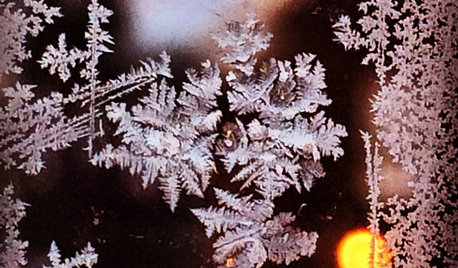
LIFEPolar Vortex: How Houzzers Are Coping With the Storm
Spirits are staying high even as the mercury plunges to new lows. Do any of these firsthand accounts sound familiar?
Full Story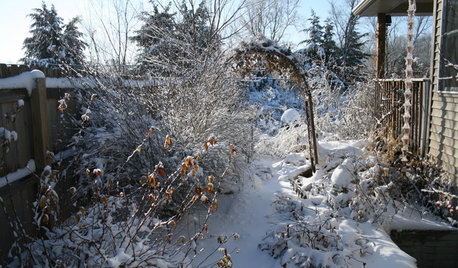
LIFE6 Ways to Beat the Winter Blahs
Snow and dark days dampening your spirits? These ideas will have you looking on the bright side
Full Story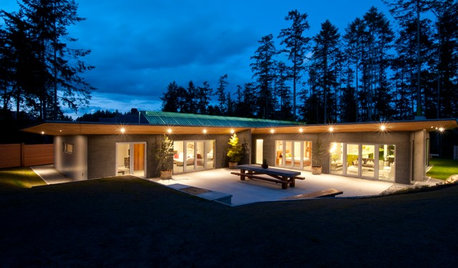
GREEN BUILDINGHouzz Tour: See a Concrete House With a $0 Energy Bill
Passive House principles and universal design elements result in a home that’ll work efficiently for the long haul
Full Story
KITCHEN DESIGN7 Tricky Questions to Ask When Planning Your New Kitchen
Addressing these details will ensure a smoother project with personalized style
Full Story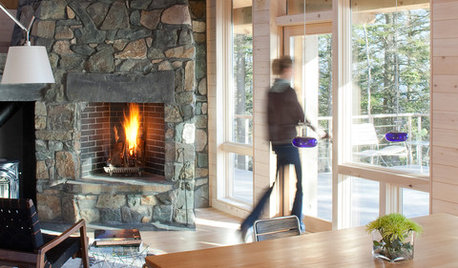
WOODKnotty and Nice: Highly Textured Wood Has a Modern Revival
Whether it's cedar, fir or pine, if a wood has a knot, it's hot
Full Story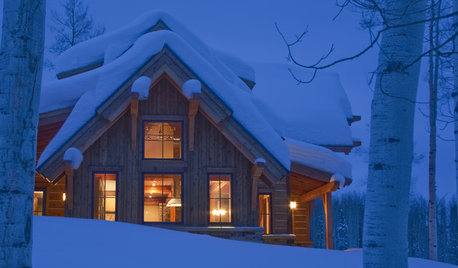
LIFEIs Cabin Fever Real? Share Your Story
Are snow piles across the U.S. leading to masses of irritability and boredom? We want to hear your experience
Full Story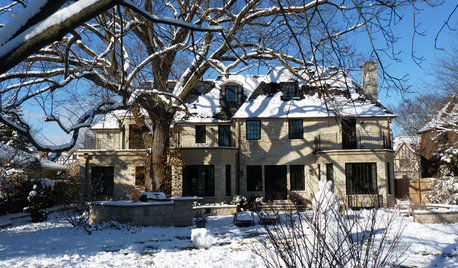
LIFEHouzz Call: How Are You Handling the Record-Breaking Cold?
Share your tales, strategies and photos for everything polar vortex
Full Story
BATHROOM WORKBOOK5 Ways With a 5-by-8-Foot Bathroom
Look to these bathroom makeovers to learn about budgets, special features, splurges, bargains and more
Full Story
KITCHEN COUNTERTOPSQuartz vs. Granite: The Battle of the Countertops
Read about the pros and cons — and see great examples — of these popular kitchen countertop materials
Full Story



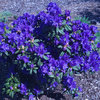
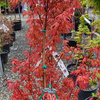
SeniorBalloon